'Like a junior race with Tour de France riders' – Inside the first UCI Gravel World Championships
A debrief from the Veneto with Cromwell, Stephens, Roche and Haas
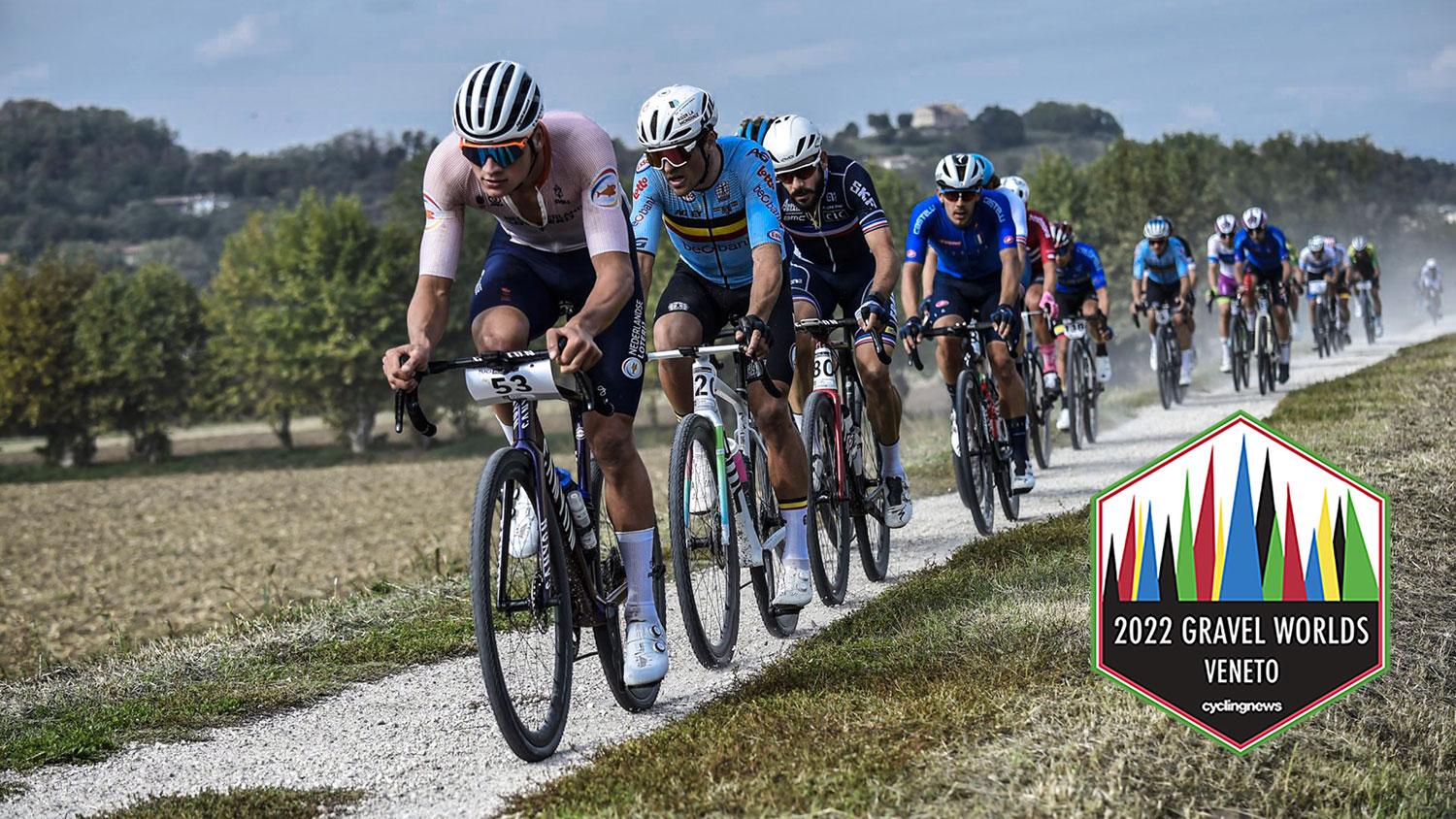
When Nicolas Roche left the WorldTour peloton last year, he could hardly have expected it to come back and find him again in his new cycling life as a gravel rider. No, just when he thought he was out, it pulled him back in – and then remorselessly set about trying to rip his hamstrings apart for five hours in the Veneto.
Welcome to the inaugural UCI Gravel World Championships.
Gianni Vermeersch (Belgium) was already at the podium being helped into the elite men’s rainbow jersey when Roche reached the finish line in Cittadella on Sunday afternoon. No matter, the Irishman’s thousand-yard stare was paired with a smile as he made his way gingerly through the finish area on Via Garibaldi. It was that kind of a day.
"It was like racing a junior race but with Tour de France riders," Roche joked. "I think it was great fun and a lot of the pro riders appreciated it."
The road professionals certainly carried off the spoils. Vermeersch was joined by Daniel Oss (Italy) and his Alpecin-Deceuninck teammate Mathieu van der Poel (Netherlands) on the podium, while the first nine places at the finish were occupied by WorldTour riders, with Greg Van Avermaet (Belgium), Magnus Cort (Denmark) and Zdenek Stybar (Czech Republic) all prominent.
The course was lighter on jagged gravel sections than more established events in North America, while there was little climbing beyond the early ascent of Monte Berico. In other words, the terrain lent itself to the kind of sustained top-end speed that is best honed by the rigours of the WorldTour peloton. The gravel specialists competed gamely in the opening half, but the bigger engines began to dominate as the afternoon wore on and the race followed its flat path along the Brenta towards Cittadella.
"Look, when you’re a Tour de France rider, you’re just capable of doing 200km or more at such a high speed and today was a little bit more in favour of that,” said Roche, who competed alongside his younger brother Alexis in Irish colours. “When it’s a bit more technical, more rolling, up and down, and when there are no teams, then the tactics are a little bit different."
Get The Leadout Newsletter
The latest race content, interviews, features, reviews and expert buying guides, direct to your inbox!
Roche has 22 Grand Tour finishes to his name, but muscle memory can only carry a man so far against a field of this calibre. Although he has raced a handful of gravel races this season, Roche’s schedule has also included a stint on Dancing with the Stars and the duties of national road coach. Training time was understandably restricted and gravel racing was never quite like this.
"After 130k, I cramped and I had to get off the bike, and I really felt like it was the first race of the year,” he confessed. “What I felt that I really lacked today was just the speed on the flat and that’s why I cramped in the hamstring, which I’d never done before."
This was never likely to be an ordinary gravel race. But then again, how could it? These were the World Championships, after all.
"Today it’s easy to look back and say the gravel race was not really a gravel race, and there was a lot of road on the course," Roche said. "But I think we have to appreciate the fact that people are trying to organise it here in Europe and it’s a good start."
Absentees and start grid politics
When the UCI first announced plans to organise a season-long Gravel Series and a Gravel World Championships, it seemed to stoke a minor culture war within gravel cycling. Some habitués of the established gravel events in North America were wary of the UCI’s involvement, ostensibly fearing that it would not be true to the rather hazy concept of the 'spirit of gravel'.
Talks to host the World Championships in the United States fizzled out and instead Filippo Pozzato’s PP Sport Events stepped in to organise the first two editions in the Veneto.
As the Gravel World Championships drew nearer, it became apparent that many of the top American exponents of the discipline would not be making the journey across the Atlantic. A Europe-based cycling entity hadn’t been viewed with this much wariness in the American Midwest since Team Cinzano ganged up on Dave Stohler in Breaking Away.
No matter, there was a contingent of full-time gravel riders who made a point of supporting the UCI Gravel Series throughout the season rather than confining themselves to the longer-standing – and often more lucrative – races on the North American calendar. Nathan Haas and Piotr Havik were among their number, but on arrival in the Veneto for the World Championships, they were left to wonder if their efforts had been in vain.
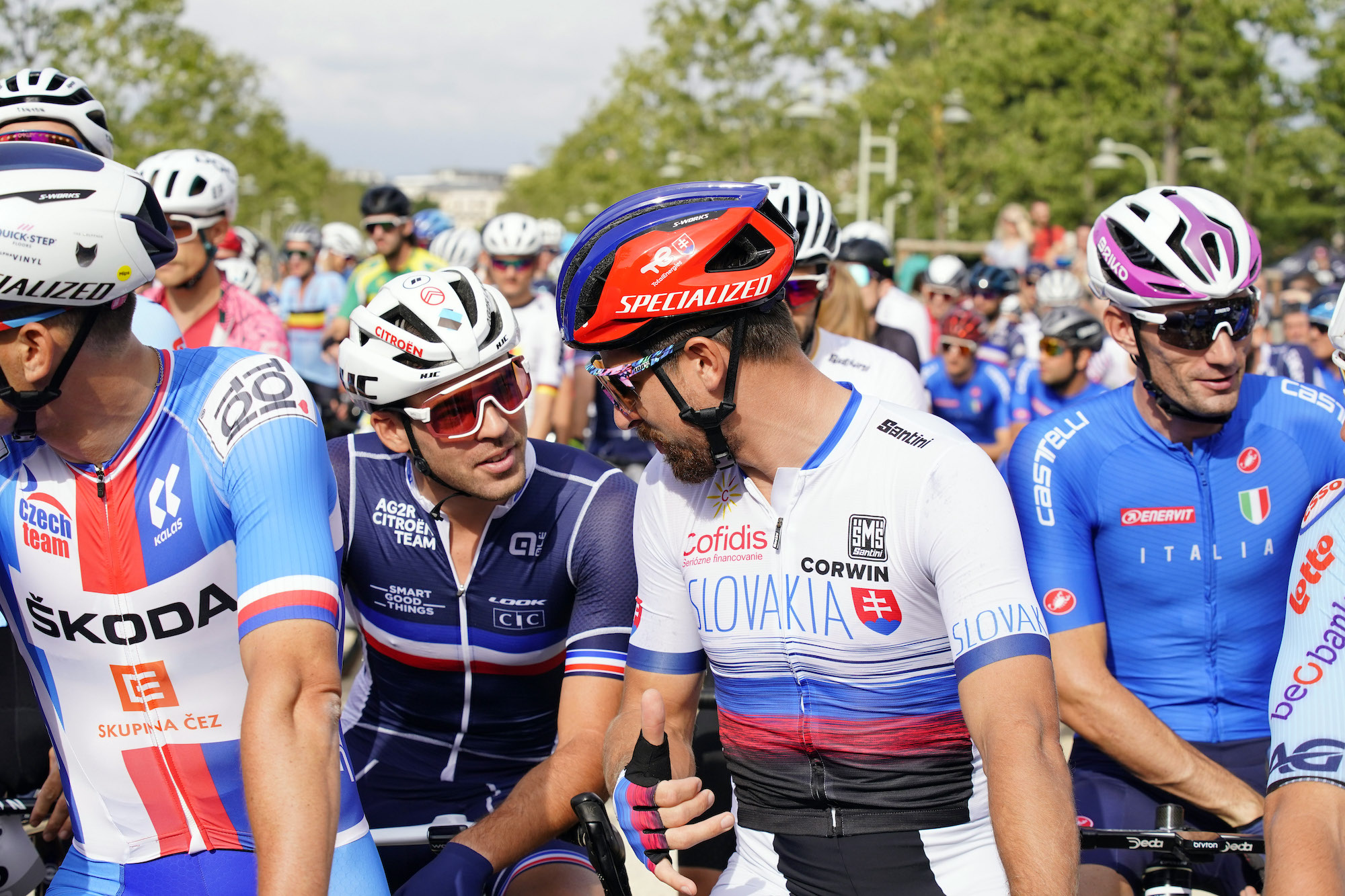
When the allocation of start grid places for the elite races was first revealed, it emerged that the UCI had taken points earned from road, cyclo-cross and mountain bike events into consideration, but not those from its own Gravel Series – a remarkable oversight in a gravel race. There was understandable consternation among the gravel specialists on Friday evening and Saturday morning, even if an imperfect compromise was brokered after talks with the UCI.
"Normally, start grid wouldn’t matter but when there’s a bottleneck up a climb and then a technical downhill at the start, we’ve got to call bullshit as bullshit, because this is Gravel Worlds," Haas said. "Tom Pidcock had to start at the back of the Mountain Bike Worlds, even though he was Olympic champion, and he did that without complaining because he knew the rules. The rules here aren’t as defined and that’s what we need to work towards."
There were some more symbolic issues, too. It was one thing for the late influx of road talent to the field – from Van der Poel and Van Avermaet to Peter Sagan and Miguel Ángel López – to garner the media headlines before the event, but quite another for the UCI’s own marketing of the event to all but ignore the gravel specialists during the build-up.
"A small part of me was a bit hurt when I saw just road pros on the front row of the start line, while we were on the second row after some discussion," Haas said. "A lot of people argue that it’s a mix of this and that, but it’s really its own sport."
The racing
Among the various novelties of the Gravel World Championships was the placement of the elite women’s and men’s races on successive days. That decision was perhaps dictated by the demands of live television coverage, but it helped to ensure that the best female riders were competing directly against one another rather than sprinkled amid the men’s field.
The choice to make the women’s race some 54km shorter than the men’s, on the other hand, was rather less progressive, even if the 140km event was certainly dynamic, with the winning move forcing its way clear with over 60km to go.
Pre-race favourite Pauline Ferrand-Prévot emerged victorious in her first-ever gravel race, outsprinting her fellow mountain biker Sina Frei (Switzerland) to the rainbow jersey, while Chiara Teocchi (Italy) fended off Jade Treffeisen (Germany) to take bronze.
The fact that the event was dominated by mountain bikers and the rainbow claimed by a gravel neophyte seemed to confirm that this route, which interspersed single track, gravel and asphalt, was not in the same register as a North American gravel race. However, WorldTour pro Tiffany Cromwell’s gravel palmarès includes this year’s SBT GRVL Blue Course, and the Australian – who placed sixth here – didn’t feel the hybrid nature of this course was a problem.
"It’s definitely different to gravel races I’ve raced, and I’ve raced predominantly the US ones, but it was good. For a first edition, it proved to be selective enough and obviously the strongest won, because Pauline is very versatile," Cromwell said. "It really was like a mix between gravel and road racing. The start was quite selective, but then you basically had everyone as individuals, except the Italians, who were not helping the chase [behind Teocchi]."
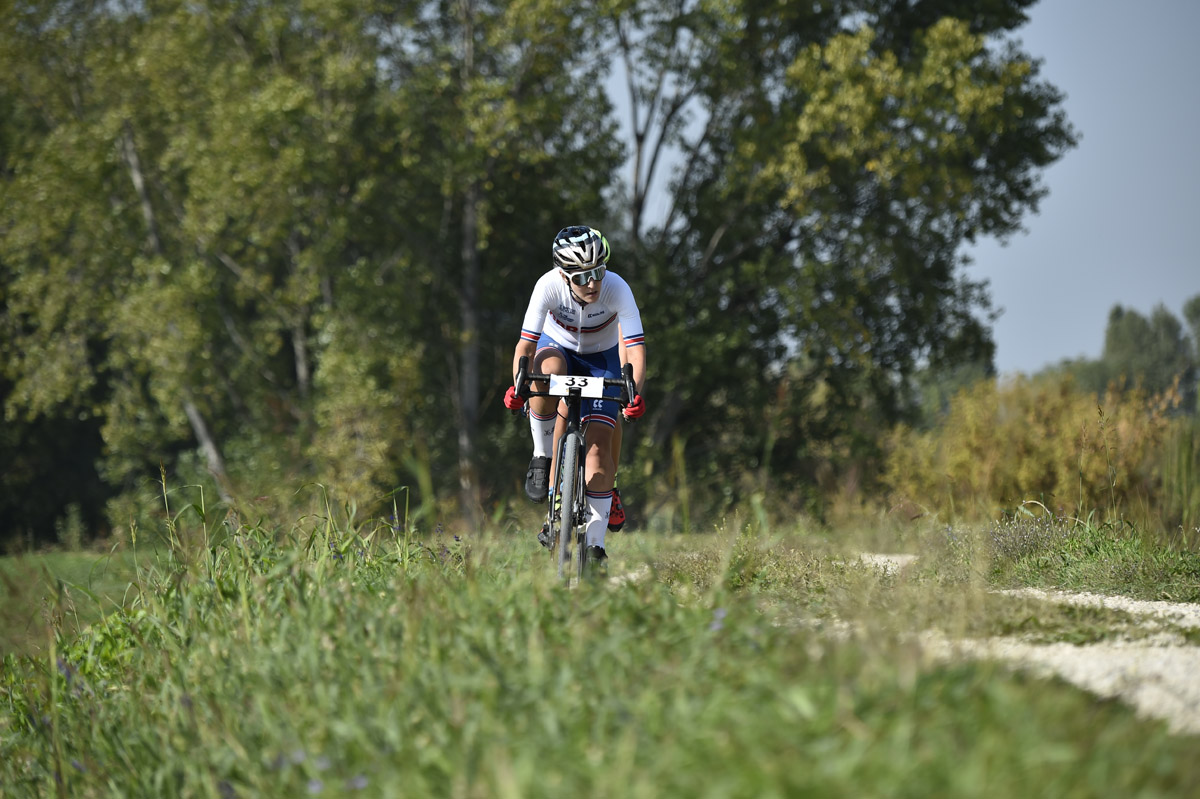
Italy’s commitment to racing as a team was again a factor in the men’s race, with riders like Davide Ballerini and Alessandro De Marchi (an attacker at Il Lombardia the previous day) helping to hinder any pursuit of their teammate Oss in the winning break.
"It’s hard enough to beat one or two Italians. Try beating 40 Italians – it’s kind of impossible," Roche said. "They played the perfect race."
The pursuit wasn’t helped by the pre-race favourite Van der Poel’s natural reluctance to chase down his Alpecin-Deceuninck stablemate Vermeersch. The clear-eyed reality of professional life was always going to trump the vague ideal of the ‘spirit of gravel.’ Or as Haas put it: "I spoke to Mathieu to chase, and he said, ‘My teammate is up there.’ I said, ‘He’s Belgian,’ and he said, ‘No: my teammate.’ That’s shit, but it is what it is."
Earlier in the race, some technical – as opposed to philosophical – differences between gravel and road racing were on show. On the climb to the sanctuary atop Monte Berico, the riders with a season of WorldTour racing in their legs were to the fore. On the drop over the other side, and on the more technical terrain that followed in the first 50km, the off-road cohort enjoyed some time in the ascendency.
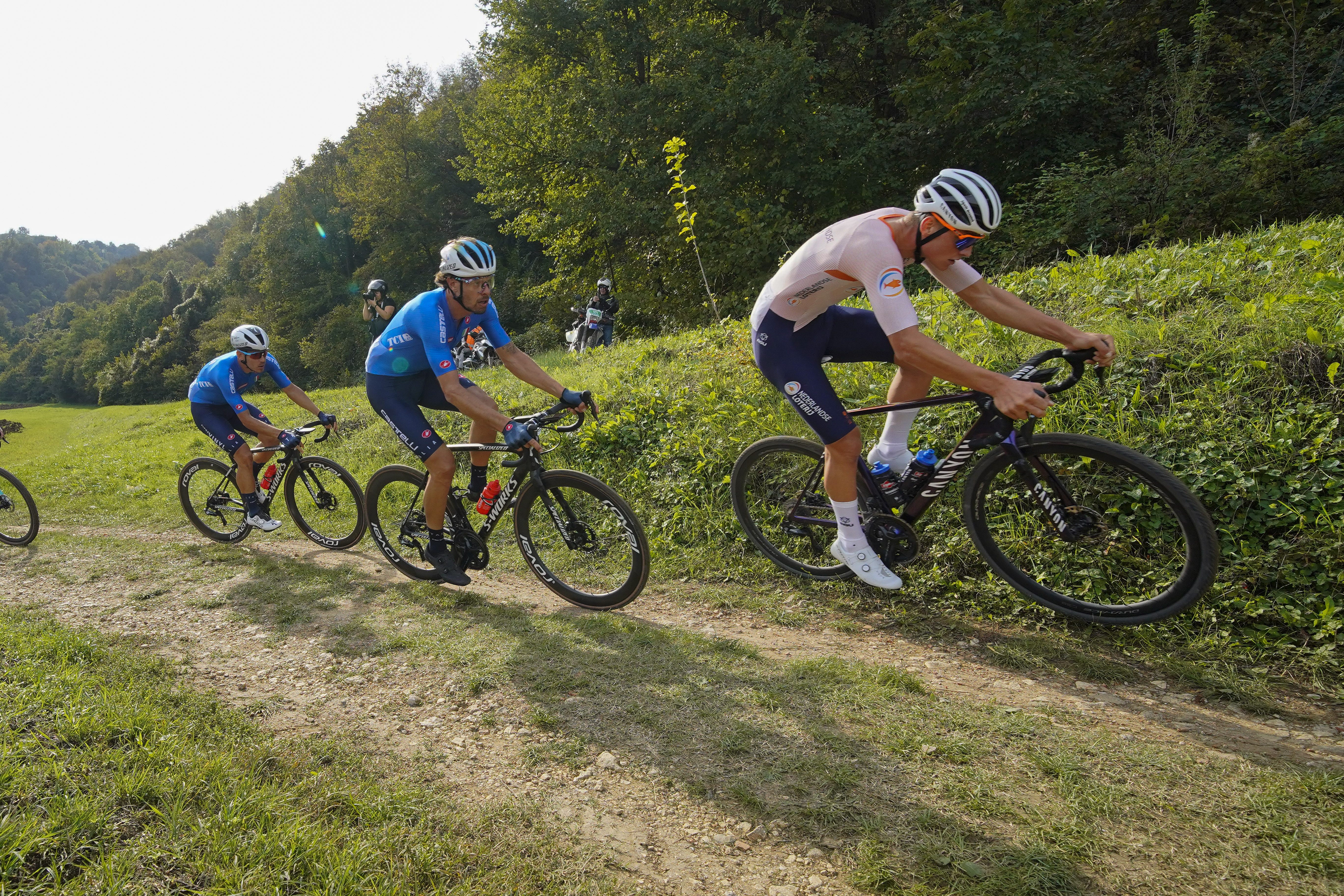
"On the first climb, all I could see were gravel riders going backwards and the roadies out in front. Then on the way down, we were carving them up,” Haas said. “Full credit to these roadies, they’re so strong, but they were in road shoes and unclipping on the descents, and I was taking maximum risk to go around them."
Lauren Stephens (USA) was competing in her third different Worlds in a month after riding the Marathon MTB event in Denmark and the road race in Australia, and she was better placed than most to categorise this inaugural gravel title race. Indeed, she was better placed than most throughout the race, forming part of the decisive, five-woman move for 30km or so before the pace of Ferrand-Prévot et al finally told. Cramp meant she was forced to walk up the final ramp from the Brenta into Cittadella, but her enthusiasm for the course remained intact.
"It was a lot more interesting than I expected it to be, with a lot of sections that went between single and double track. You had wider sections too, but what’s exciting about gravel is that no two courses are the same," Stephens said as the sun began to dip over Cittadella’s neoclassical Duomo. "Gravel is an adventure – and we had an adventure today."
The future
Van der Poel’s suggestion that the presence of WorldTour riders at the Gravel Worlds would eventually help the discipline to grow as a spectator sport – "In a few years it might also be a really big discipline" – may not have played well to gravel’s North American heartland, but it was hard to quibble with his point of view.
The box office appeal of riders like Sagan, Van der Poel and Ferrand-Prévot can bring a very young and still developing discipline to a wider audience, but the emergence of this particular format does not dilute the pre-existing events in North America.
"I’d put them as two separate things," Cromwell said. "The US races have their own unique feel. It’s a lot more community-based, it’s more about racing hard together and then having a good time afterwards with some beers, inclusion, diversity, all of those things. It would be nice to have more races on European soil, but the US races are special, they’re just different: really hard and super long."
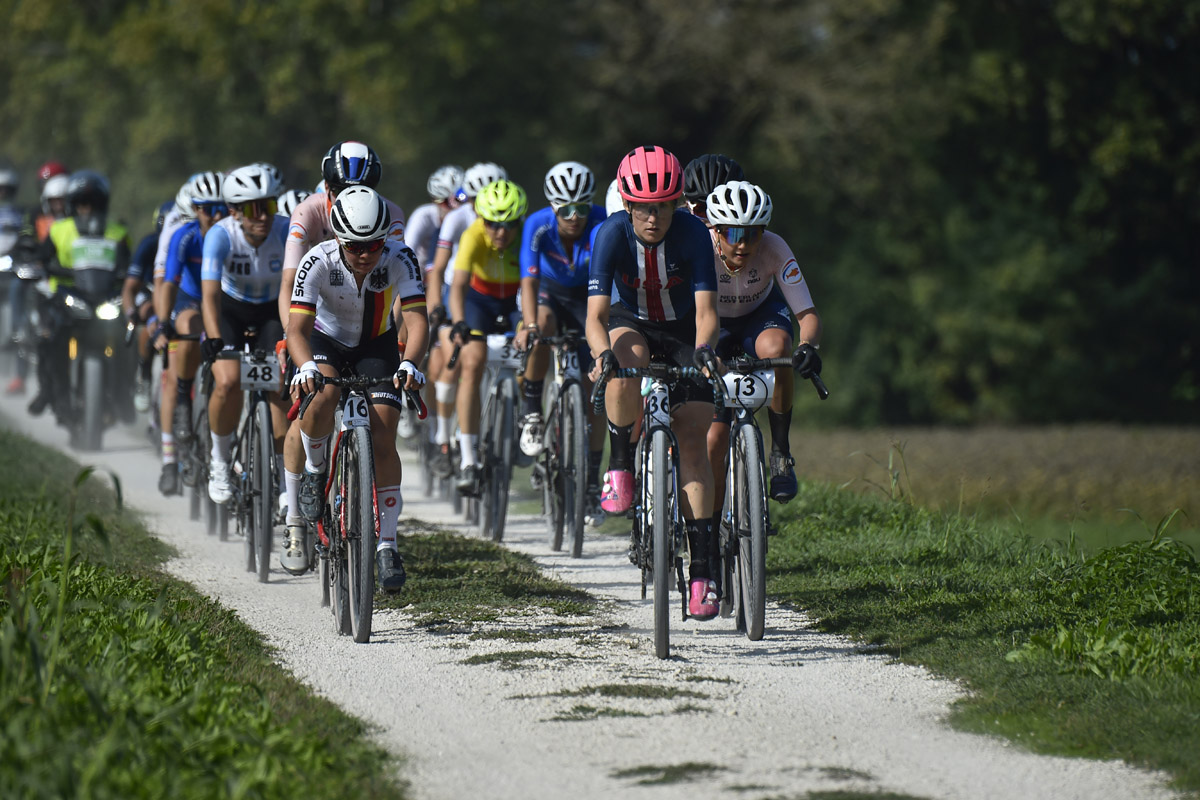
Her words were echoed by her compatriot Haas, who remains keen to see the nascent UCI Gravel Series develop alongside the older American events.
"I have a big interest in promoting gravel outside of America. It’s grown there, but it’s not an American sport. Nobody owns the sport," Haas said. "If the European flavour of gravel is a little different, that’s cool. I like hamburgers in the States, and I also like Italian pasta. It’s good to have different flavours."
There are some teething troubles to be soothed in the UCI’s involvement in gravel racing, not least when it comes to rewarding riders’ commitment to following a season-long gravel programme, but the Veneto Worlds may at least have served to open a more formal dialogue. There are now plans for Erwin Vervecken, the manager of the UCI Gravel Series, to meet with a commission of gravel riders this winter to discuss the development of the discipline.
Meanwhile, one of the young European spectators in the hospitality tent on Cittadella’s Piazza Pierobon seemed inspired by what he saw on Sunday afternoon. "I don’t have a lot of gravel experience yet," said one Tadej Pogačar. "But I like mountain biking, I like cyclocross and I don’t think gravel is too far away from road racing. I need to try it soon."
That’s the spirit, right?

Barry Ryan was Head of Features at Cyclingnews. He has covered professional cycling since 2010, reporting from the Tour de France, Giro d’Italia and events from Argentina to Japan. His writing has appeared in The Independent, Procycling and Cycling Plus. He is the author of The Ascent: Sean Kelly, Stephen Roche and the Rise of Irish Cycling’s Golden Generation, published by Gill Books.